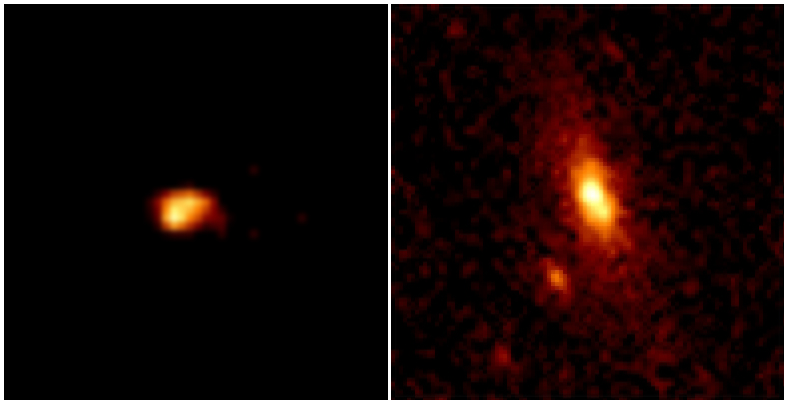
 Credit: X-ray (left): NASA/IOA/Fabian et al.
Optical (right): NASA/U.Durham/Smail et al.
Credit: X-ray (left): NASA/IOA/Fabian et al.
Optical (right): NASA/U.Durham/Smail et al.
A Black Hole Unveiled
Active galaxies contain supermassive central black holes. These black holes
generate enormous amounts of energy making active galaxies visible almost to the
edge of the universe, and they often produce huge jets which extend for
thousands or millions of light years. But what is the relation between these
outstanding central engines and their host galaxies? Do all galaxies contain
supermassive black holes? The Milky Way is thought to contain an "inactive"
supermassive black hole which we can detect because it's so close to us.
Detecting such black holes in the center of more distant galaxies, where the
black hole may be hidden behind the thick gas and dust in the galaxy's center,
is more difficult. Since X-rays can penetrate large amounts of material,
astronomers can use X-ray imaging to try to unveil hidden central black holes.
An X-ray
image (above left) by the Chandra X-ray
Observatory of a "normal" spiral galaxy (shown in optical light above right)
shows that this apparently "inactive" galaxy contains a strong central X-ray
source. Astronomers believe this is the signature of the central black hole in
this galaxy.
Last Week *
HEA Dictionary * Archive
* Search HEAPOW
* Education
Each week the HEASARC
brings you new, exciting and beautiful images from X-ray and Gamma ray
astronomy. Check back each week and be sure to check out the HEAPOW archive!
Page Author: Dr. Michael F. Corcoran
Last modified €


